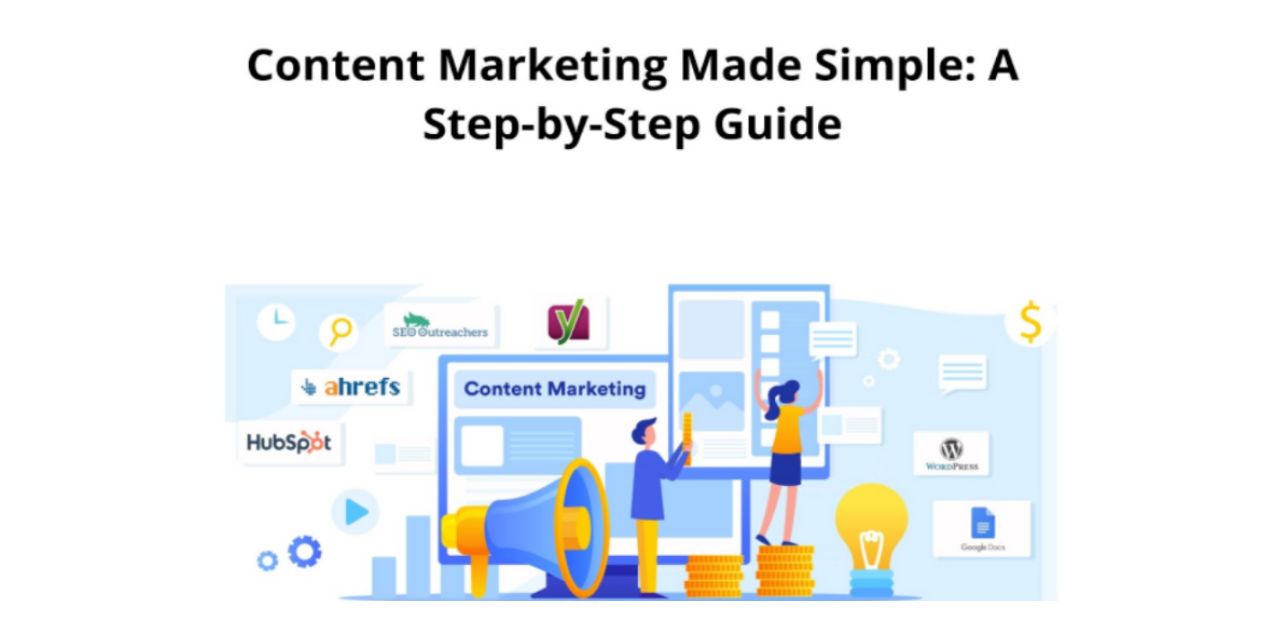Content marketing is essential to earn customers, build brand loyalty, and continue growing a business. Defining your business strategy helps you describe your products and services.
Now figure out how you want your brand voice to come across.
Made with DesignCap
Determine the importance of the Oxford comma, your link structure, and other details. After completing your ideation process, the next step is to create a content marketing strategy. A right and leading content marketing company knows exactly how to implement these strategies. Here are some steps to establish a solid content marketing campaign. You can raise your content and, in time, grow your sales by remaining consistent and gritted.
What is Content Marketing?
Content Marketing involves producing and sharing online materials, like blog posts, videos, vlogs, infographics, and podcasts. This is designed to catch your target audience's attention and pique their interest. In content marketing, the goal is to create leads, expand your database, increase sales, and build trust.
Suppose you want to stay in business for the long run (and why wouldn't you?). Content Marketing isn't a quick fix, however. Content Marketing allows you to develop long-term relationships with your audience by regularly providing high-quality and valuable content. There has been Content Marketing for hundreds of years, and if you want to find out more about that side of things, this article is excellent.
A content marketing strategy is more than a list of what you're going to create; it also tells you how to make it, distribute it, and ultimately use it to attract, retain, and convert readers and viewers into paying customers.
Steps To Successful Content Marketing
1. Know Your Audience
Your audience's conversation about your product, service, and the entire industry is crucial. You might put efforts in targeting Segment A with Widget A, but Segment H might need that exact widget, while Segment A wants Widget K. By aligning your product lines with the needs of your clientele, you can more effectively reach your target market.
2. Determining The KPIs
SMART goals should be measured by key performance indicators (KPIs). You can measure actual performance against your goals with quantitative data in KPIs.
Awareness of the brand: traffic to the site, social media followers, subscriptions, mentions (by customers and partners)
Sales and traffic to the site: revenue and revenue per day
Comparisons of conversion rates, shopping cart abandonment rates, shipping rates, and competitive prices
3. Choosing The Content Channel
Now, you need to decide what content you want to create. You need to create buyer personas and identify your target audience to do this. Here are some questions about your target audience that you can use to narrow down the content types that are most relevant for them:
- What are they looking for from you?
- How do they plan to overcome challenges?
- What are the reasons they need your product or service?
- Is there anything you can do to help them succeed?
- What are their favorite places to spend time?
Once you have determined your type of content, review the various content types and the right content marketing service.
4. Deciding The Content-Type
Once you've chosen the type of content you'll use for marketing; it's time to choose the channels through which you'll distribute that content. How can you share it?
You'll be able to identify the channel to use for some types of content. For example, if you are creating content for Facebook, your channel would be the social media site itself.
5. Searching And Analyzing The Keywords
Any SEO marketing company will recommend SEO and Google Analytics to understand successful content marketing campaigns. Taking the time to compare keywords that you rank for, your competitors' keywords, and the keywords your clients search for might prove eye-opening.
6. Subheadings, Topics & Headings
As soon as you've chosen your keywords, incorporate them into your headings. You can use this to guide your writing, similar to a high school outline, but Google recognizes headings as necessary, and if it includes your targeted keyword, that is icing on the cake. Make sure to use a single keyword (or string of keywords) several times throughout the article-a good starting point is once per section and once per heading. Your article is now balanced, as you have sprinkled in your alternative or secondary keywords.
You need to keep in mind to include a clear call to action at the end of your article. If your reader has read up to this point, now what would you like them to do?
7. Setting The Budget
You now need to set a budget. You must consider the type of content you create and the channels you use to market it. Next, determine your budget by asking yourself these questions:
- Is there any technology you need to use to create the content (such as graphic design software such as Adobe Photoshop, a subscription to Canva, a camera for taking high-quality photos and videos)?
- Do you need to hire a content marketer or designer (for example, artists, writers, editors, designers)?
- Are you required to pay for ad space?
- To enhance or measure your specific type of content, do you need access to particular tools or resources?
Keep track of how your responses affect your budget – whether an increase or a decrease from what you had already estimated.
8. Creation & Distribution Of Content
Your content should be created and distributed so your audiences can consume it – and possibly convert. A content calendar or social media calendar can help you consistently produce and share content with your prospects and customers.
Furthermore, allowing you to schedule content ahead of time will be helpful to your team in staying on top of all the content being created.
9. Review The Content
WordPress is used by the majority of websites, including this one. You can post, edit, and even delete your content quickly on WordPress and other platforms. You should edit your keywords if they were misguided or the topic didn't align with your brand. A blog that performed well a year ago can be revived by adding an updated section or reworking the existing content. Video transcriptions with text overlay can be a great way to revive videos that have fallen out of favor.
10. Analyzing The Results
As a final step, you should analyze and measure your results to determine if any adjustments need to be made to reach more audiences with your content marketing efforts.
To evaluate the success of your content marketing strategy, you need to look at your SMART goals and KPIs. Has your content marketing strategy been successful? Did you come close to achieving them, or did you miss the mark?
Concluding Thoughts!
A great piece of content is a valuable asset. Customers are more likely to return for more if you can create a positive experience for them. Capturing your audience's attention and continually reinforcing a positive brand perception is your ticket to success.
You can use all of these content marketing strategies to help you on your marketing journey. Try out new methods and adapt as needed to reach your audience. Make sure you understand your audience's needs and teach them when necessary.

About the Author: Vivek Sharma
Vivek is an SEO expert at India's leading digital marketing company. Vivek can often review SEO strategies for client sites with the SEO team and is actively involved in SEO. He regularly consults, trains, and speaks on SEO, PPC, and local search techniques.




